Past lab members are listed after those currently working in the lab.
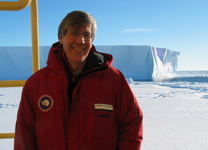 Bob Sanders is an aquatic ecologist working primarily with planktonic protists in both marine and freshwater systems. He has received funding to study feeding ecology and remineralization of nutrients by protists, the physiology and ecological importance of mixotrophic phytoplankton and ciliates, the utilization of heterotrophic protists (protozoa) as food sources for zooplankton, the bioavailability of DON (dissolved organic nitrogen), the role of DON/DOC in eutrophication, and the effects of ultraviolet radiation on food webs. He also has interests in symbioses and the ecology of protists from polar regions, including participation in oceanographic voyages to Antarctica and the Arctic. Other oceanographic cruises have taken him to the Gulf of Maine, the North Atlantic, the Sargasso Sea. He also had the opportunity to dive to >500 m aboard the submersible Alvin in the Gulf of Mexico. He is currently the Associate Dean for Faculty Affairs and Advancement in the College of Science & Technology at Temple University.
Bob Sanders is an aquatic ecologist working primarily with planktonic protists in both marine and freshwater systems. He has received funding to study feeding ecology and remineralization of nutrients by protists, the physiology and ecological importance of mixotrophic phytoplankton and ciliates, the utilization of heterotrophic protists (protozoa) as food sources for zooplankton, the bioavailability of DON (dissolved organic nitrogen), the role of DON/DOC in eutrophication, and the effects of ultraviolet radiation on food webs. He also has interests in symbioses and the ecology of protists from polar regions, including participation in oceanographic voyages to Antarctica and the Arctic. Other oceanographic cruises have taken him to the Gulf of Maine, the North Atlantic, the Sargasso Sea. He also had the opportunity to dive to >500 m aboard the submersible Alvin in the Gulf of Mexico. He is currently the Associate Dean for Faculty Affairs and Advancement in the College of Science & Technology at Temple University.
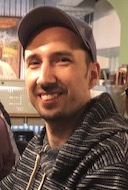
Jean-David Grattepanche joined the lab in October 2018 to participate in our research on Antarctic mixotrophy. He came to Philadelphia from Smith College, where he worked with Laura Katz on a set of projects that used microscopy and molecular tools to evaluate the ecological factors that driving the biodiversity of eukaryotic microbes. Since joining Temple he has been on three oceanographic voyages off of the western Antarctic Peninsula, taught Genomic Biology and Computational Genomics for the Biology Department at Temple University and collaborated with colleagues in several departments and schools. website
PAST POST-DOCTORAL FELLOWS / RESEARCH ASSISTANT PROFESSORS
Sarah Hamsher came to the lab from the University of Colorado, 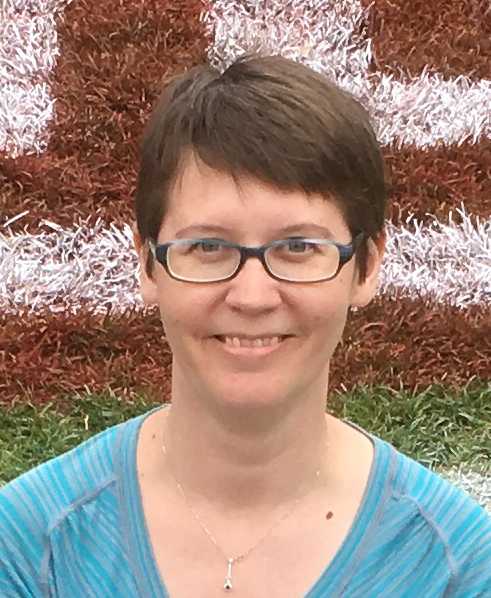 Boulder where her work focused on sequencing, assembling, and analyzing chloroplast genomes of four closely related diatom taxa. Her Ph.D. work was developing and using a short sequence of DNA (DNA barcode) to identify marine and freshwater diatoms as part of the Barcode Consortium. he has worked on the feeding ecology of several mixotrophic flagellate species and on effects of UVB on a ciliated protist (see publications). In August 2018, she started a tenure-track position at Grand Valley State University in Allendale MI.
Boulder where her work focused on sequencing, assembling, and analyzing chloroplast genomes of four closely related diatom taxa. Her Ph.D. work was developing and using a short sequence of DNA (DNA barcode) to identify marine and freshwater diatoms as part of the Barcode Consortium. he has worked on the feeding ecology of several mixotrophic flagellate species and on effects of UVB on a ciliated protist (see publications). In August 2018, she started a tenure-track position at Grand Valley State University in Allendale MI.
Scott Fay came to the lab from the University of California, Berkeley 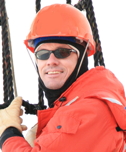 in April 2010, where he also was lab manager of the Molecular Phylogenetics Lab, UC Museum of Paleontology. His Ph.D. work was on the ecology and evolution of foraminifera with dinoflagellate symbionts. At Temple, he worked on projects involving mixotrophy and kleptoplasty in Antarctic protists. He participated in our research voyage in the Ross Sea, Antarctica in January to February 2011 and is lead author on several manuscripts from that work. He returned to California as a postdoctoral researcher in the Berkeley Initiative in Global Change Biology after 2 years in Philadelphia. He was Vice President of Informatics at Phylagen for a time and is currently at Ansa Biotechnologies..
in April 2010, where he also was lab manager of the Molecular Phylogenetics Lab, UC Museum of Paleontology. His Ph.D. work was on the ecology and evolution of foraminifera with dinoflagellate symbionts. At Temple, he worked on projects involving mixotrophy and kleptoplasty in Antarctic protists. He participated in our research voyage in the Ross Sea, Antarctica in January to February 2011 and is lead author on several manuscripts from that work. He returned to California as a postdoctoral researcher in the Berkeley Initiative in Global Change Biology after 2 years in Philadelphia. He was Vice President of Informatics at Phylagen for a time and is currently at Ansa Biotechnologies..
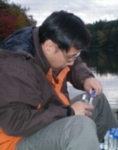 An-Yi Tsai was a Visiting Research Scholar for the 2009 – 2010 academic year. He worked with the lab to publish numerous papers addressing ecological interactions between oceanic nanoflagellates and picoplankton. He is currently a Professor in the Institute of Marine Environmental Chemistry and Ecology at National Taiwan Ocean University.
An-Yi Tsai was a Visiting Research Scholar for the 2009 – 2010 academic year. He worked with the lab to publish numerous papers addressing ecological interactions between oceanic nanoflagellates and picoplankton. He is currently a Professor in the Institute of Marine Environmental Chemistry and Ecology at National Taiwan Ocean University.
Christa Speekmann joined the lab in July 2005 after receiving her Ph.D.from the Marine Science 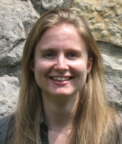 Institute, University of Texas at Austin. She worked on projects investigating the effects of UV on the food web until September 2007 when she began an AAAS Science & Technology Policy Fellowship at THE US Department of Agriculture (USDA). Currently, Christa is Assistant Director for International Technical and Regulatory Capacity Building at USDA-APHIS.
Institute, University of Texas at Austin. She worked on projects investigating the effects of UV on the food web until September 2007 when she began an AAAS Science & Technology Policy Fellowship at THE US Department of Agriculture (USDA). Currently, Christa is Assistant Director for International Technical and Regulatory Capacity Building at USDA-APHIS.
PAST GRADUATE STUDENTS
Christopher Carnivale started in the Ph.D. program in Fall 2017. Chris became interested the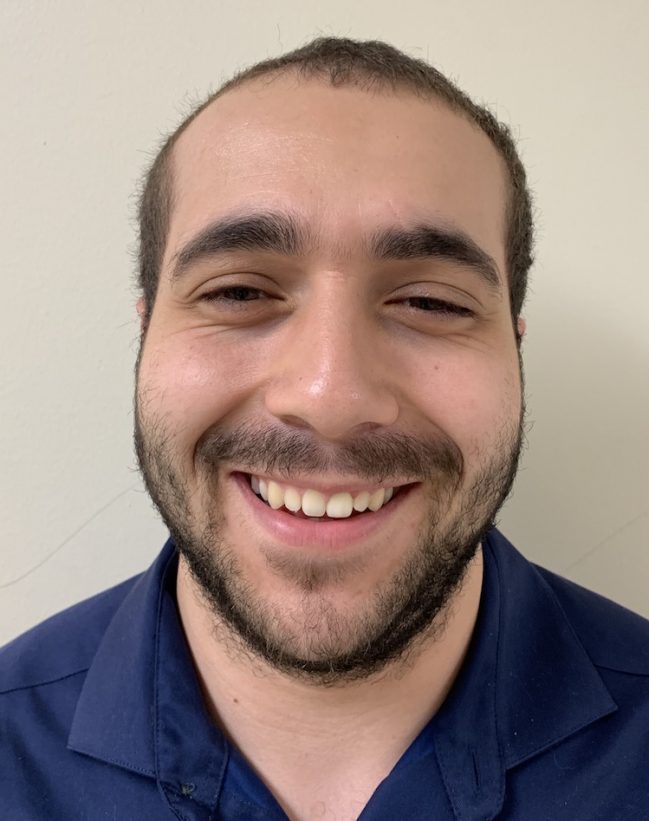 distribution of microplastics and their effects on microbial food webs. In addition to lab work, he was able to collect samples for microplastic distribution off of the western coast of the Antarctic Peninsula during oceanographic expeditions in December 2019 and April/May 2022. He also ran experiments examining bacterivory during the two Antarctic trips. He successfully defended his dissertation and was hooded in May 2025.
distribution of microplastics and their effects on microbial food webs. In addition to lab work, he was able to collect samples for microplastic distribution off of the western coast of the Antarctic Peninsula during oceanographic expeditions in December 2019 and April/May 2022. He also ran experiments examining bacterivory during the two Antarctic trips. He successfully defended his dissertation and was hooded in May 2025.
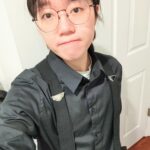 Eli (Chia-mei) Chang first worked in the lab in Spring 2018 as part of the CST Undergraduate Research Program. She began in the Biology Graduate program in Fall 2019 and began investigating how environmental manipulation affects the physiology of marine and freshwater mixotrophic chrysophytes. She successfully defended her Ph.D. dissertation in March and was hooded in May 2024. She is currently doing research at National Taiwan Ocean University.
Eli (Chia-mei) Chang first worked in the lab in Spring 2018 as part of the CST Undergraduate Research Program. She began in the Biology Graduate program in Fall 2019 and began investigating how environmental manipulation affects the physiology of marine and freshwater mixotrophic chrysophytes. She successfully defended her Ph.D. dissertation in March and was hooded in May 2024. She is currently doing research at National Taiwan Ocean University.
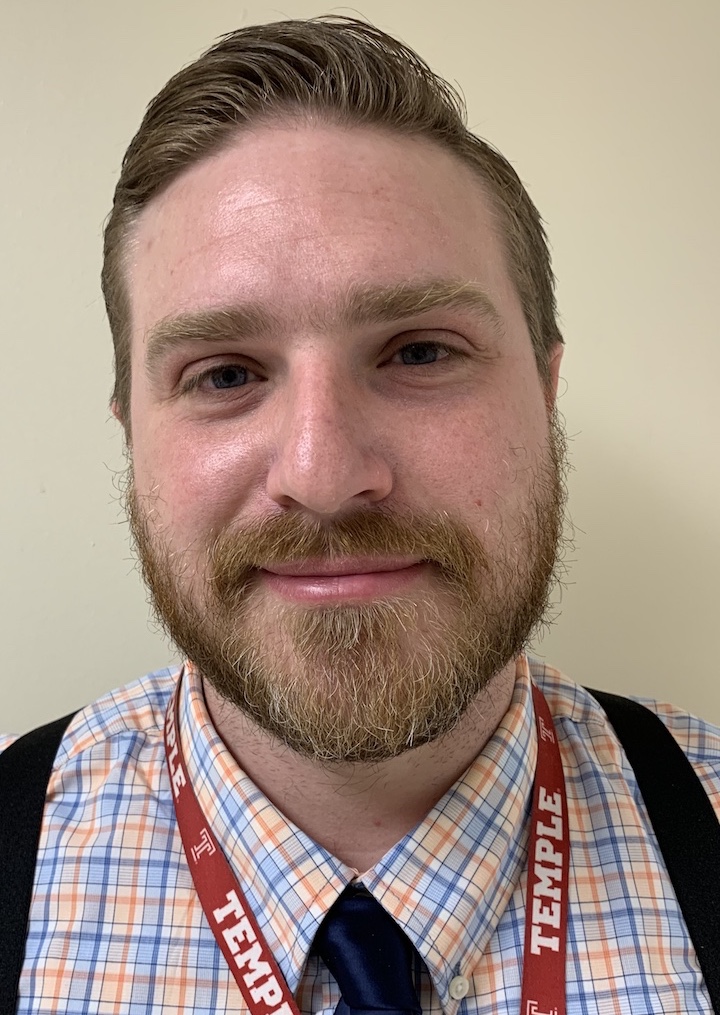
Andrew Van Kuren started working toward his Ph.D. in Fall 2017 and completed the program in May 2023. He has an M.S. in Parasitology from Penn State University and worked with a variety of mixotrophs from our culture collection, including the effects of plastics on colony bouyancy. His field work examined mixotrophy in vernal pools at three sites and during different stages of increasing and decreasing water saturation. He is currently teaching biology courses at Holy Family University. website
Sarah DeVaul Princiotta entered the Ph.D. program in Fall 2010 after 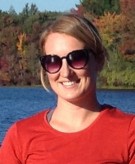 working on projects as an undergraduate in the lab. Her research examined bacterivory by heterotrophic and mixotrophic protists from fresh waters in the laboratory and field, including the effects of light and temperature on the growth and feeding of phagotrophic phytoplankton. She completed her Ph.D. in May 2016 and was Director of Research and Education at the Lacawac Sanctuary and Biological Field Station in Pennsylvania, followed by a one-year stint as a postdoctoral research associate at Hancock Biological Station. She is currently in a tenured Associate Professor of Biology at Penn State, Berks. Sarah’s current website is here.
working on projects as an undergraduate in the lab. Her research examined bacterivory by heterotrophic and mixotrophic protists from fresh waters in the laboratory and field, including the effects of light and temperature on the growth and feeding of phagotrophic phytoplankton. She completed her Ph.D. in May 2016 and was Director of Research and Education at the Lacawac Sanctuary and Biological Field Station in Pennsylvania, followed by a one-year stint as a postdoctoral research associate at Hancock Biological Station. She is currently in a tenured Associate Professor of Biology at Penn State, Berks. Sarah’s current website is here.
Zaid McKie-Krisberg joined the lab in Fall 2009 after earning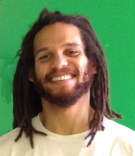 an M.S. at the University of Illinois at Chicago, where he studied the effects of climate change and nitrogen deposition on terrestrial plant systems. His projects at Temple University examined factors affecting the growth and competition of mixotrophic algae isolated from Antarctic and Arctic waters, and included modeling approaches in addition to experimentation. Zaid graduated in December 2014 and took a post-doc with Juergen Polle at Brooklyn College. He was awarded an NSF Postdoctoral Fellowship: A Systems Approach to Investigations of Light Independent C4 Type Carbon Fixation in Green Algae. After working as a High Performance Computing Specialist at the State University of New York Downstate Medical Center, Invitae, and USA Samsung Semiconductor, Zaid has taken his expertise to a position at Cisco as an AI Architect.
an M.S. at the University of Illinois at Chicago, where he studied the effects of climate change and nitrogen deposition on terrestrial plant systems. His projects at Temple University examined factors affecting the growth and competition of mixotrophic algae isolated from Antarctic and Arctic waters, and included modeling approaches in addition to experimentation. Zaid graduated in December 2014 and took a post-doc with Juergen Polle at Brooklyn College. He was awarded an NSF Postdoctoral Fellowship: A Systems Approach to Investigations of Light Independent C4 Type Carbon Fixation in Green Algae. After working as a High Performance Computing Specialist at the State University of New York Downstate Medical Center, Invitae, and USA Samsung Semiconductor, Zaid has taken his expertise to a position at Cisco as an AI Architect.
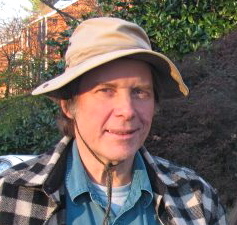
Grier Sellers joined the Biology Ph.D. program with an M.S. from the University of Maryland and considerable background in protistology. His project at Temple concerned ecological and evolutionary aspects of foreign organelle retention in an Antarctic dinoflagellate. Grier found that this organism selectively fed upon the haptophyte alga Phaeocystis antarctica when offered in combination with other polar haptophyte or cryptophyte species. He also showed that the dinoflagellate, isolated from its prey and starved, would take up plastids from P. antarctica but not from other polar haptophyte or cryptophyte species offered to it. In addition, Grier studied the survival and recovery of both the dinoflagellate and P. antarctica following the five months darkness of a simulated austral winter. Grier completed his Ph.D. in August 2014 and has taught at several universities, including Temple.
Erin Graham began in the Biology Ph.D. program in Fall 2008 after earning an M.S. from the St Joseph’s University. Her research projects at Temple University explored carbon transfer from symbiotic algae (Symbiodinium) to two zoanthid (cnidaria) species and from intercapsular algae to eggs/larvae of the salamander Ambystoma maculatum. Additionally, she examined how rising temperature and CO2 levels may alter the relationship between the Symbiodinium and zoanthids. She received her Ph.D. in January 2014 and completed postdoctoral position at the USDA in Newport, Oregon. Erin then went to Spark Therapeutics as a research scientist and science writer. She is currently a Lead Medical Writer at Acumen Medical Communications.
earning an M.S. from the St Joseph’s University. Her research projects at Temple University explored carbon transfer from symbiotic algae (Symbiodinium) to two zoanthid (cnidaria) species and from intercapsular algae to eggs/larvae of the salamander Ambystoma maculatum. Additionally, she examined how rising temperature and CO2 levels may alter the relationship between the Symbiodinium and zoanthids. She received her Ph.D. in January 2014 and completed postdoctoral position at the USDA in Newport, Oregon. Erin then went to Spark Therapeutics as a research scientist and science writer. She is currently a Lead Medical Writer at Acumen Medical Communications.
Adam Heinze defended his Ph.D. dissertation in March 2009. 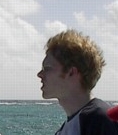 His research focused on factors that affect the temporal and depth distributions of mixotrophic algae in the genus Dinobryon. He also contributed to studies in examining ultraviolet radiation effects on protists. Adam taught at Alvernia University in Reading PA and continued to collaborate with members of the lab with interests in the role of small changes in temperature for microorganism behavior. He currently works in the agricultural production industry (Director of Operations, MyForest Foods, NY).
His research focused on factors that affect the temporal and depth distributions of mixotrophic algae in the genus Dinobryon. He also contributed to studies in examining ultraviolet radiation effects on protists. Adam taught at Alvernia University in Reading PA and continued to collaborate with members of the lab with interests in the role of small changes in temperature for microorganism behavior. He currently works in the agricultural production industry (Director of Operations, MyForest Foods, NY).
Niveen Ismail defended her M.S. degree in July 2010. Her 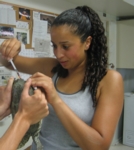 research on bioaccumulation of PCBs by marine terrapins included field collections in PCB-impacted and relatively uncontaminated areas of New Jersey and New York. At the right she is taking blood samples from a terrapin that was later released back into its natural environment. Niveen received her Ph.D. in Environmental Engineering at Stanford University on an NSF National Graduate Research Fellowship and is currently an Associate Professor at Smith College.
research on bioaccumulation of PCBs by marine terrapins included field collections in PCB-impacted and relatively uncontaminated areas of New Jersey and New York. At the right she is taking blood samples from a terrapin that was later released back into its natural environment. Niveen received her Ph.D. in Environmental Engineering at Stanford University on an NSF National Graduate Research Fellowship and is currently an Associate Professor at Smith College.
Amy O’Brien Macaluso successfully defended her 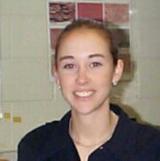 Ph.D. in July 2010. Her research and publications address the effects of ultraviolet radiation and chromophoric dissolved organic matter (CDOM) on protists in freshwater food webs. We are reviewing some unpublished work from her time at Temple with the view of publication. She has received teaching awards for her biology teaching at SUNY Adirondack.
Ph.D. in July 2010. Her research and publications address the effects of ultraviolet radiation and chromophoric dissolved organic matter (CDOM) on protists in freshwater food webs. We are reviewing some unpublished work from her time at Temple with the view of publication. She has received teaching awards for her biology teaching at SUNY Adirondack.

Don Schoener received an M.S. degree in Biology in August 2005. His thesis concerned the effects of ultraviolet radiation on two marine ciliates and he also worked on our lake mesocosms. He received his Ph.D. from the Marine Science Department at University of Connecticut where he worked with George McManus and investigated mixotrophic ciliates. He currently teaches biology in Massachusetts.
 Tom Sardina finished his Master’s degree in in May 2001. His thesis research involved the ability of two species of freshwater planktonic ciliates to use photo-enzymatic repair mechanisms against damage from ultraviolet radiation. Tom then attended Temple University School of Dentistry and currently practices dentistry in Pennsylvania.
Tom Sardina finished his Master’s degree in in May 2001. His thesis research involved the ability of two species of freshwater planktonic ciliates to use photo-enzymatic repair mechanisms against damage from ultraviolet radiation. Tom then attended Temple University School of Dentistry and currently practices dentistry in Pennsylvania.
 Tina Sung finished her Master’s degree in the Biology Department in the summer of 2001. Her research project addressed the interactive effects of temperature and ultraviolet radiation on the marine ciliate, Parauronema acutum. Tina enrolled in the Veterinarian Medicine program at The University of Pennsylvania and received her DVM in 2006. She is currently at Boehringer Ingelheim Animal Health working as a professional services veterinarian.
Tina Sung finished her Master’s degree in the Biology Department in the summer of 2001. Her research project addressed the interactive effects of temperature and ultraviolet radiation on the marine ciliate, Parauronema acutum. Tina enrolled in the Veterinarian Medicine program at The University of Pennsylvania and received her DVM in 2006. She is currently at Boehringer Ingelheim Animal Health working as a professional services veterinarian.
Yolanda Wilkerson Kirksey was a Future Faculty Fellow who finished her M.A. degree in the Biology Department in 1999. Her thesis was entitled “Studies on the Microbial Assessment and Control of Environmental Contaminants.” Since getting her degree at Temple, Yolanda has worked in pharmaceutical laboratories, including Merck Research Laboratories, Bristol-Myer Squibb, and Wyeth Research.
PAST UNDERGRADUATE RESEARCHERS
Danny Marshall worked in the lab in Spring 2024, first to learn bioinformatics with Dr. JayDiii Grattepanche and broadened his experience with lab work culturing protists and examining how dissolved nutrient concentrations affect the growth rate of a mixotrophic chrysophyte.
 Kylie Stabler began in June 2023 as part Undergraduate Research Program and has been identifying and enumerating freshwater protists collected seasonally as part of her project. She also learned microscopic picking techniques from lakewater; that enabled her to combine individuals of the same morpho-species and use PCR and sequencing for identification. She graduated in May 2024 with a BS in Biology and a minor in Neuroscience Research.
Kylie Stabler began in June 2023 as part Undergraduate Research Program and has been identifying and enumerating freshwater protists collected seasonally as part of her project. She also learned microscopic picking techniques from lakewater; that enabled her to combine individuals of the same morpho-species and use PCR and sequencing for identification. She graduated in May 2024 with a BS in Biology and a minor in Neuroscience Research.
 Ellie Han began in the lab as part of the Science Scholars program in Spring 2023 and has continued through the summer. She worked with DNA/RNA samples from extraction through PCR using species from our Antarctic Protist Culture Collection and used sequencing data to begin identifying protists and build trees with Dr. Grattepanche.
Ellie Han began in the lab as part of the Science Scholars program in Spring 2023 and has continued through the summer. She worked with DNA/RNA samples from extraction through PCR using species from our Antarctic Protist Culture Collection and used sequencing data to begin identifying protists and build trees with Dr. Grattepanche.
Sydney Pan joined the lab in Spring 2022 and began working on identifying protists from our Antarctic collection with training in photomicroscopy and molecular methods from Dr. Grattepanche. She also worked together with Ellie Labriola (see below) on a project examining responses of a dinoflagellate to UV radiation, presenting a poster in the Annual Biology Department Student Research symposium (April 2022). Sydney continued to do molecular work in the lab with our Antarctic Culture Collection until she graduated in December 2022.
Antarctic collection with training in photomicroscopy and molecular methods from Dr. Grattepanche. She also worked together with Ellie Labriola (see below) on a project examining responses of a dinoflagellate to UV radiation, presenting a poster in the Annual Biology Department Student Research symposium (April 2022). Sydney continued to do molecular work in the lab with our Antarctic Culture Collection until she graduated in December 2022.
Eleanor (Ellie) Labriola worked with Sydney Pan in Spring 2022 to identify protists from our Antarctic collection and they also worked together on a project examining responses of a freshwater dinoflagellate to UV radiation, presenting a poster in the Annual Biology Department Student Research symposium (April 2022). She shifted to another lab after this to work on projects more aligned with her major in Neuroscience – Cell & Molecular.
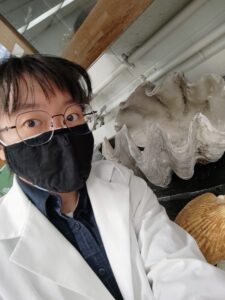 Chia-mei Chang worked in the lab on projects with our cultures of polar mixotrophic phytoplankton beginning in Spring 2018 as part of the CST Undergraduate Research Program. She stayed with the lab and started in the Biology graduate program in Fall 2019.
Chia-mei Chang worked in the lab on projects with our cultures of polar mixotrophic phytoplankton beginning in Spring 2018 as part of the CST Undergraduate Research Program. She stayed with the lab and started in the Biology graduate program in Fall 2019.
Scott Schaffer worked in the lab in Spring and Fall 2017 as part of the 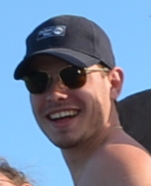 CST Undergraduate Research Program and continued to volunteer in the lab through his graduation in May 2018. He accepted a position as a fisheries observer on commercial vessels beginning in the summer of 2018. He currently works at the Northeast Fisheries Science Center of National Oceanic and Atmospheric Administration (NOAA) .
CST Undergraduate Research Program and continued to volunteer in the lab through his graduation in May 2018. He accepted a position as a fisheries observer on commercial vessels beginning in the summer of 2018. He currently works at the Northeast Fisheries Science Center of National Oceanic and Atmospheric Administration (NOAA) .
Kerri Ellis 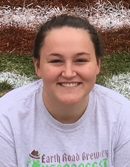 worked in the lab in Spring and summer of 2017 as part of the CST Undergraduate Research Program. Her laboratory research project on a mixotrophic flagellate was incorporated into a paper published in Hydrobiologia (Hamsher et al. 2020).
worked in the lab in Spring and summer of 2017 as part of the CST Undergraduate Research Program. Her laboratory research project on a mixotrophic flagellate was incorporated into a paper published in Hydrobiologia (Hamsher et al. 2020).
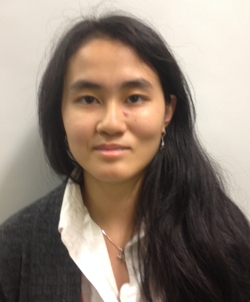
Tiffany Nguyen began working in the lab in Summer 2014 as part of the President’s Scholars Program and continued to volunteer in the lab afterwards. Her work with Dr. Sarah Princiotta investigating bacterivory in a freshwater lake was published in 2023 (Princiotta et al). Tiffany started at Lewis Katz School of Medicine at Temple University in Fall 2019.
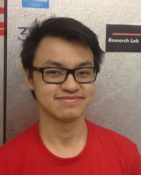 Jan Angeles worked in the lab in Summer 2015 as part of the President’s Scholars Program. He learned techniques to culture polar and temperate phytoplankton and ciliates, as well as determination of bacterivory by protists. He returned to the lab in Spring 2016 as part of CST’s Undergraduate Research Program and continued through the summer.
Jan Angeles worked in the lab in Summer 2015 as part of the President’s Scholars Program. He learned techniques to culture polar and temperate phytoplankton and ciliates, as well as determination of bacterivory by protists. He returned to the lab in Spring 2016 as part of CST’s Undergraduate Research Program and continued through the summer.
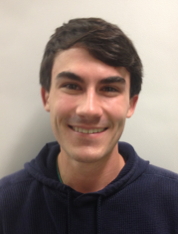 Emmet Nealon began working in the lab during the Fall semester 2015 as part of the College’s Undergraduate Research Program and continued through Spring 2016. He developed a project on competition between bacterivorous protists. He’ll be starting medical school in North Carolina in July 2021.
Emmet Nealon began working in the lab during the Fall semester 2015 as part of the College’s Undergraduate Research Program and continued through Spring 2016. He developed a project on competition between bacterivorous protists. He’ll be starting medical school in North Carolina in July 2021.
 Chris Carnivale began working in the lab in Fall 2013 as part of the CST Undergraduate Research Program and continued through Spring 2015. His research project investigated effects of UV radiation on strains of the mixotrophic prasinophyte alga, Micromonas. After graduation, he worked as a microbiology technician for a time before returning to the lab as a Ph.D. student.
Chris Carnivale began working in the lab in Fall 2013 as part of the CST Undergraduate Research Program and continued through Spring 2015. His research project investigated effects of UV radiation on strains of the mixotrophic prasinophyte alga, Micromonas. After graduation, he worked as a microbiology technician for a time before returning to the lab as a Ph.D. student.
Brian Smith worked in the lab in Fall 2014 with support of the CST 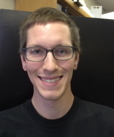 Undergraduate Research Program on a project examining the functional response of the mixotrophic alga Dinobryon across a range of food particle concentrations and dissolved nutrient concentrations. He continued to volunteer after graduating and his project was part of a body of work published in Journal of Phycology (Princiotta et al. 2016). Brian then worked on an environmental project in Puerto Rico, and in 2020 he began in Penn State’s Master of Professional Studies in Renewable Energy and Sustainability Systems.
Undergraduate Research Program on a project examining the functional response of the mixotrophic alga Dinobryon across a range of food particle concentrations and dissolved nutrient concentrations. He continued to volunteer after graduating and his project was part of a body of work published in Journal of Phycology (Princiotta et al. 2016). Brian then worked on an environmental project in Puerto Rico, and in 2020 he began in Penn State’s Master of Professional Studies in Renewable Energy and Sustainability Systems.
Jessica Wyatt worked in the lab in Fall 2014 with support of the CST Undergraduate Research Program on a project examining the functional response of a mixotrophic alga across a range of food particle concentrations.
Lydia Adnane worked in the lab in Summer 2014 as part of the President’s Scholars Program. She learned various microscopic techniques and took part in a project examining bacterivory in a lake system.
Jesse Lepkowski began working in the lab during the summer of 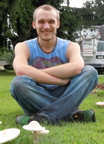 2012 and contributed to projects investigating mixotrophy in laboratory and field experiments. His research project with aquatic fungi indicated that increases in fungal hyphae were related to temperature with a growth optimum at 22°C and inhibition at higher and lower temperatures. In addition, at the optimum temperature, hyphae growth was inhibited by competition with bacteria. Jesse graduated with Distinction in Biology in Spring 2014 and became a teacher at W.B. Saul High School.
2012 and contributed to projects investigating mixotrophy in laboratory and field experiments. His research project with aquatic fungi indicated that increases in fungal hyphae were related to temperature with a growth optimum at 22°C and inhibition at higher and lower temperatures. In addition, at the optimum temperature, hyphae growth was inhibited by competition with bacteria. Jesse graduated with Distinction in Biology in Spring 2014 and became a teacher at W.B. Saul High School.
 Amy Parekh began working in the lab in Fall 2011 and participated in a project that examined carbonic anhydrase activity in different clades of the dinoflagellate Symbiodinium, as related to its symbiotic relationship with cnidarians. She continued in the lab through her graduation in May 2013 and then took a summer internship at Woods Hole Oceanographic Institution. She contributed to Graham et al. 2015. Journal of Experimental Marine Biology & Ecology. She has worked as a Regulatory Affairs Professional in the pharmaceutical industry.
Amy Parekh began working in the lab in Fall 2011 and participated in a project that examined carbonic anhydrase activity in different clades of the dinoflagellate Symbiodinium, as related to its symbiotic relationship with cnidarians. She continued in the lab through her graduation in May 2013 and then took a summer internship at Woods Hole Oceanographic Institution. She contributed to Graham et al. 2015. Journal of Experimental Marine Biology & Ecology. She has worked as a Regulatory Affairs Professional in the pharmaceutical industry.
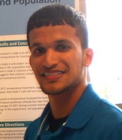 Roni Devassy worked in the lab during two academic years 2010 – 2012, and earned “Distinction in Biology” during that time. The projects on which he worked examined effects of rising temperature on Symbiodinium clades isolated from zooanthids. Roni also received several service awards at Temple for his untiring efforts as a peer teacher. He was a co-author on Graham et al. with Amy. He is now aData Systems Analyst at Children’s Hospital of Philadelphia.
Roni Devassy worked in the lab during two academic years 2010 – 2012, and earned “Distinction in Biology” during that time. The projects on which he worked examined effects of rising temperature on Symbiodinium clades isolated from zooanthids. Roni also received several service awards at Temple for his untiring efforts as a peer teacher. He was a co-author on Graham et al. with Amy. He is now aData Systems Analyst at Children’s Hospital of Philadelphia.
 Lance Dixon was in the lab for the 2009-2010 academic year until he graduated with a B.S. in Biology from Temple in May 2010. He worked with graduate student Erin Graham investigating aspects of the cnidarian – dinoflagellate symbiosis.
Lance Dixon was in the lab for the 2009-2010 academic year until he graduated with a B.S. in Biology from Temple in May 2010. He worked with graduate student Erin Graham investigating aspects of the cnidarian – dinoflagellate symbiosis.
Jon Swinden began working in the lab in  Spring 2008. He contributed to numerous projects investigating heterotrophic and mixotrophic protist ecology and was the go-to person for constructing equipment. Jon graduated in May 2009, but remained in touch and contributed to a paper published in Aquatic Microbial Ecology in 2013. After graduation Jon worked as the Transplant Coordinator at Gift of Life Donor Program in Philadelphia and is now an M.D. at Geisinger Medical Center in Danville PA.
Spring 2008. He contributed to numerous projects investigating heterotrophic and mixotrophic protist ecology and was the go-to person for constructing equipment. Jon graduated in May 2009, but remained in touch and contributed to a paper published in Aquatic Microbial Ecology in 2013. After graduation Jon worked as the Transplant Coordinator at Gift of Life Donor Program in Philadelphia and is now an M.D. at Geisinger Medical Center in Danville PA.
Corinne Truesdale worked on experiments 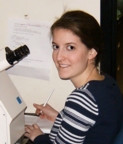 evaluating factors that affect encystment in the phytoplankton genus Dinobryon. Her work was part of a lab-wide project that resulted in a paper published in Aquatic Microbial Ecology in 2013. Corrine graduated from Temple in May 2009, took positions as an ecological observer on fishing vessels off in Alaska and studying sea cows and artisanal fisheries in Madagascar. Corinne returned to the U.S. and received a M.S. in Biological Oceanography at the University of Rhode Island. She is currently the principal biologist at Rhode Island Department of Environmental Management Division of Marine Fisheries.
evaluating factors that affect encystment in the phytoplankton genus Dinobryon. Her work was part of a lab-wide project that resulted in a paper published in Aquatic Microbial Ecology in 2013. Corrine graduated from Temple in May 2009, took positions as an ecological observer on fishing vessels off in Alaska and studying sea cows and artisanal fisheries in Madagascar. Corinne returned to the U.S. and received a M.S. in Biological Oceanography at the University of Rhode Island. She is currently the principal biologist at Rhode Island Department of Environmental Management Division of Marine Fisheries.
 Novneet Sahu worked in the lab beginning in Fall 2006. He participated in a variety of projects investigating factors that affect the feeding of the mixotrophic flagellate Dinobryon in the laboratory and in a lake in the Pocono Mountains. He also designed a project to determine how additional stressors affected the response of ciliates to UV radiation. Nov graduated with a B.S. in Biology in December 2007 and is currently practicing medicine in Newark DE.
Novneet Sahu worked in the lab beginning in Fall 2006. He participated in a variety of projects investigating factors that affect the feeding of the mixotrophic flagellate Dinobryon in the laboratory and in a lake in the Pocono Mountains. He also designed a project to determine how additional stressors affected the response of ciliates to UV radiation. Nov graduated with a B.S. in Biology in December 2007 and is currently practicing medicine in Newark DE.
 Vinh Nguyen worked on a project in the summer of 2007 that examined the ability of ciliates to sense and respond to UV radiation. His experiments showed that two species of ciliates with growth that was highly negatively affected by UV-B sensed and avoided exposure to UV. Two other species were less likely to flee UV exposure.
Vinh Nguyen worked on a project in the summer of 2007 that examined the ability of ciliates to sense and respond to UV radiation. His experiments showed that two species of ciliates with growth that was highly negatively affected by UV-B sensed and avoided exposure to UV. Two other species were less likely to flee UV exposure.
Ann Christine Olsson Allen was  in the lab from 2003-2004. She worked on a project investigating photoprotective compounds in aquatic protists. She graduated in May 2004 with a B.S. in Environmental Studies. She won the 2004 Environmental Studies Award for academic excellence, projects completed and involvement in extracurricular environmental activities. She works in environmental biotechnology.
in the lab from 2003-2004. She worked on a project investigating photoprotective compounds in aquatic protists. She graduated in May 2004 with a B.S. in Environmental Studies. She won the 2004 Environmental Studies Award for academic excellence, projects completed and involvement in extracurricular environmental activities. She works in environmental biotechnology.
Robyn Reinmiller (Iqbal) worked in the lab 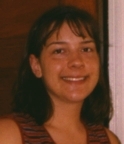 during the academic year 2001-2002. Her project involved the effects of UV radiation on the predator-prey relationship of Daphnia and a ciliate. Robyn graduated in December 2002 and was honored with the Andrea Broad Award in Biological Sciences. She was hired by Merck and received an M.S. in Biotechnology from Univ. of Pennsylvania in 2006, and an MBA from New York University 2009. She worked for a time at The Bill & Melinda Gates Foundation to distribute affordable vaccines, and still lives in Seattle.
during the academic year 2001-2002. Her project involved the effects of UV radiation on the predator-prey relationship of Daphnia and a ciliate. Robyn graduated in December 2002 and was honored with the Andrea Broad Award in Biological Sciences. She was hired by Merck and received an M.S. in Biotechnology from Univ. of Pennsylvania in 2006, and an MBA from New York University 2009. She worked for a time at The Bill & Melinda Gates Foundation to distribute affordable vaccines, and still lives in Seattle.
Rebecca Roth worked in  the lab during the summer and fall of 2000. She helped in isolating protists for use in our first UV radiation project. She graduated with a B.S. in Temple’s Environmental Studies program in 2003, began working for an environmental consulting firm and developed a talent in GIS.
the lab during the summer and fall of 2000. She helped in isolating protists for use in our first UV radiation project. She graduated with a B.S. in Temple’s Environmental Studies program in 2003, began working for an environmental consulting firm and developed a talent in GIS.
Erin Gordon worked in the lab during the summer of 2000  – between her junior and senior years at Howard University. Erin’s project was to isolate a photoprotective compound from a marine ciliate. She started in the Masters degree program in Marine Biology at San Francisco State University in 2001, but we haven’t heard from her in some time.
– between her junior and senior years at Howard University. Erin’s project was to isolate a photoprotective compound from a marine ciliate. She started in the Masters degree program in Marine Biology at San Francisco State University in 2001, but we haven’t heard from her in some time.
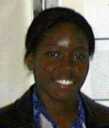
Ayasha Williams was a Biology major at Templewho worked on lab projects addressing the role of growth rate on nutrient recycling and also on the tolerance of a marine ciliate to UV-B exposure. She graduated with “Distinction in Biology” in May 2000, received her M.D. at Temple University Medical School and is currently practicing medicine in Washington, DC.
 Jean Davidson was a Biology major at Temple who graduated with “Distinction in Biology” in May 1999. She worked on a project examining the ability of a mixotrophic flagellate, Ochromonas sp., to grow on dissolved organic substances, contributing to a paper published in Microbial Ecology in 2001. She received her M.D. from the University of Medicine and Dentistry of New Jersey in 2003 and is currently a physician focusing on internal medicine in NJ.
Jean Davidson was a Biology major at Temple who graduated with “Distinction in Biology” in May 1999. She worked on a project examining the ability of a mixotrophic flagellate, Ochromonas sp., to grow on dissolved organic substances, contributing to a paper published in Microbial Ecology in 2001. She received her M.D. from the University of Medicine and Dentistry of New Jersey in 2003 and is currently a physician focusing on internal medicine in NJ.